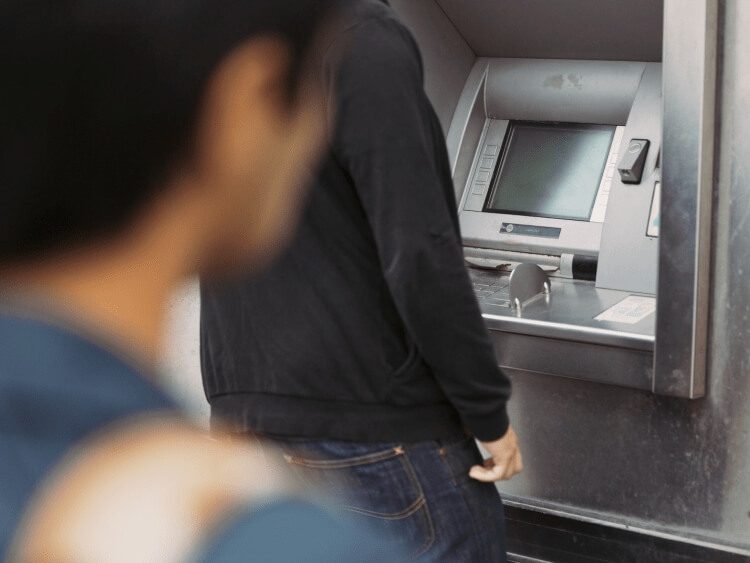
If you think of retail crime, the first things that might come to mind are small-scale shoplifting when a clerk’s eyes are turned — or armed robberies at the counter of a jewelry store, a convenience store, or a liquor shop. Those are real and sadly common crimes. But they’re not the only ones that matter.
Increasingly sophisticated, large-scale criminal acts against stores and their suppliers contribute to what is classified as organized retail crime, or ORC. The chief way that organized crime differs from lower-level crime is that ORC rings aren’t just impulsively taking items for their own use: instead, for larger financial gains, they analyze their targets, then steal goods for resale or commit information theft. These schemes sometimes involve intimidation or violence, but not always.
There are means that stores can apply to reduce the likelihood and the damage done by retail crime more generally.
Repeated, multi-person shoplifting attacks are good examples of ORC. Some of the attackers may distract store employees, or block security cameras’ viewing angles to prevent detection of theft. Other ORC techniques, as noted by the FBI, include methodical scanning of the wrong products, bar code substitutions, and altering gift cards to steal funds added by legitimate buyers.
In tune with the news, retail store attacks may not be nearly that subtle, either: Instead, they can involve smash-and-grab robberies committed at multiple sites in a short window of time, or swarming thefts where there are simply too many perpetrators to stop individually. And for audacious thieves, it’s much more efficient to intercept a load of cigarettes or electronics before delivery—from a warehouse or a truck—than to steal them from a store. And if criminals can steal information from customer’s credit and debit cards in bulk, they can use that stolen information with little risk of being intercepted by the police.
Their gains, though, are obvious losses for retailers and their customers, resulting in higher consumer prices, and increased insurance premiums. And all kinds of theft contribute to unfriendly, unwelcoming retail environments, driving away customers.
There’s another insidious element, too: The kind of criminal organizations that traffic in stolen retail goods, or run multi-site skimming operations to commit identity theft of retail customers, are the same kind that commit other dangerous crimes, too. Combatting their activities in the retail realm hurts these organizations overall, too.
What’s being done about ORC?
According to the National Retail Federation, nine states have enacted some variety of legislation aimed at ORC in 2025 alone, and more than 75 bills related to ORC have been considered. At the moment, a proposed Federal law would also put nationwide attention on the problem. The Combating Organized Retail Crime Act would establish a national center for coordinating information about such retail fraud, and consolidate retail crime reporting nationwide.

But such laws and agency cooperation are aimed mostly at tracking and prosecuting crimes.
What retailers can do
For retailers interested in reducing the impact on their own businesses, there are a number of practical steps they can take on their own premises to make their establishments less vulnerable to retail crime.
Some of these steps are personnel intensive. Greater visibility of guards, clerks, or greeting personnel serve as a visible signal that customers can’t simply steal goods with impunity. Checking of receipts at store exits similarly can help prevent customers simply walking out with unpaid merchandise. Particularly in large stores, these strategies may not even change the total staffing level, by adjusting existing staffer’s duties. In small stores where adding personnel may simply be impossible, additional training can nonetheless help staffers spot and respond intelligently to theft.
Other strategies affect the merchandise itself. Tagging products with RFID or other product identifiers, or locking products within cabinets requiring staffers to unlock them all impede theft. Even in a smash-and-grab robbery, hardened cases and multiple, separated compartments can deter attackers by making each act of theft more time consuming. The downside is that such lock-down strategies make it cumbersome to employees and to customers to inspect and compare items.
Another area that doesn’t require more personnel, though, is video surveillance, which can be employed in several ways to make retail crime both more difficult to commit, and easier to prosecute. The most obvious of these is the mere presence of always-on cameras in merchandise areas, which can be used to show when an item was stolen, and by whom, with a record that is hard to dispute. Those cameras doubtless discourage some thefts. Video records can also be used to spot suspicious activity at customer-facing credit-card terminals, which may indicate the installation of skimmers.
However, there are a number of other ways that video surveillance can play a role:
- Organized retail crime often involves repeated visits to the same stores. License plate recognition (LPR) can spot vehicles used for theft at retail locations or warehouses, and in some cases can preemptively spot or even bar their entry.
- Line crossing, loitering and other AI-driven analytics can alert store personnel to suspicious events, such as a person unexpectedly standing in the hallway next to a stockroom where customers shouldn’t be.
- Remote video monitoring means that even with lean staffing, it’s possible to have a set of eyes instantly on a camera’s output, so clerks don’t have to abandon the checkout counter or other necessary tasks
- Point of Sale (POS) integration can help stores crack down on common retail crimes, including fraudulent returns or employee-involved rebate abuse, both of which are typical of ORC.
- 911 camera sharing can give local 911 operators a real-time view of a crime in progress, while the original 911 caller can retreat to safety.
Want to see how video surveillance can make your retail store safer?

Timothy Lord has witnessed and written about IT security trends and the ongoing evolution of SaaS for more than 25 years.
Other posts that might interest you

Education in the off season: Surveillance considerations
You may think of the school year as running from late summer or early Fall to the end of next year's Spring. For security, it makes sense that security is…
August 5, 2025
Save time and simplify VMS access with SCIM and SSO.
Managing user access to business systems has long been a frustrating, time-consuming, and error-prone process for any large organization — and in the past, managing the Eagle Eye Cloud VMS…
June 30, 2025
Protecting customers from jugging with video surveillance
Jugging has emerged as a security risk for banks and credit union customers. Jugging incidents have been reported around the U.S. in recent years including notable spikes in the Baltimore…
June 24, 2025




